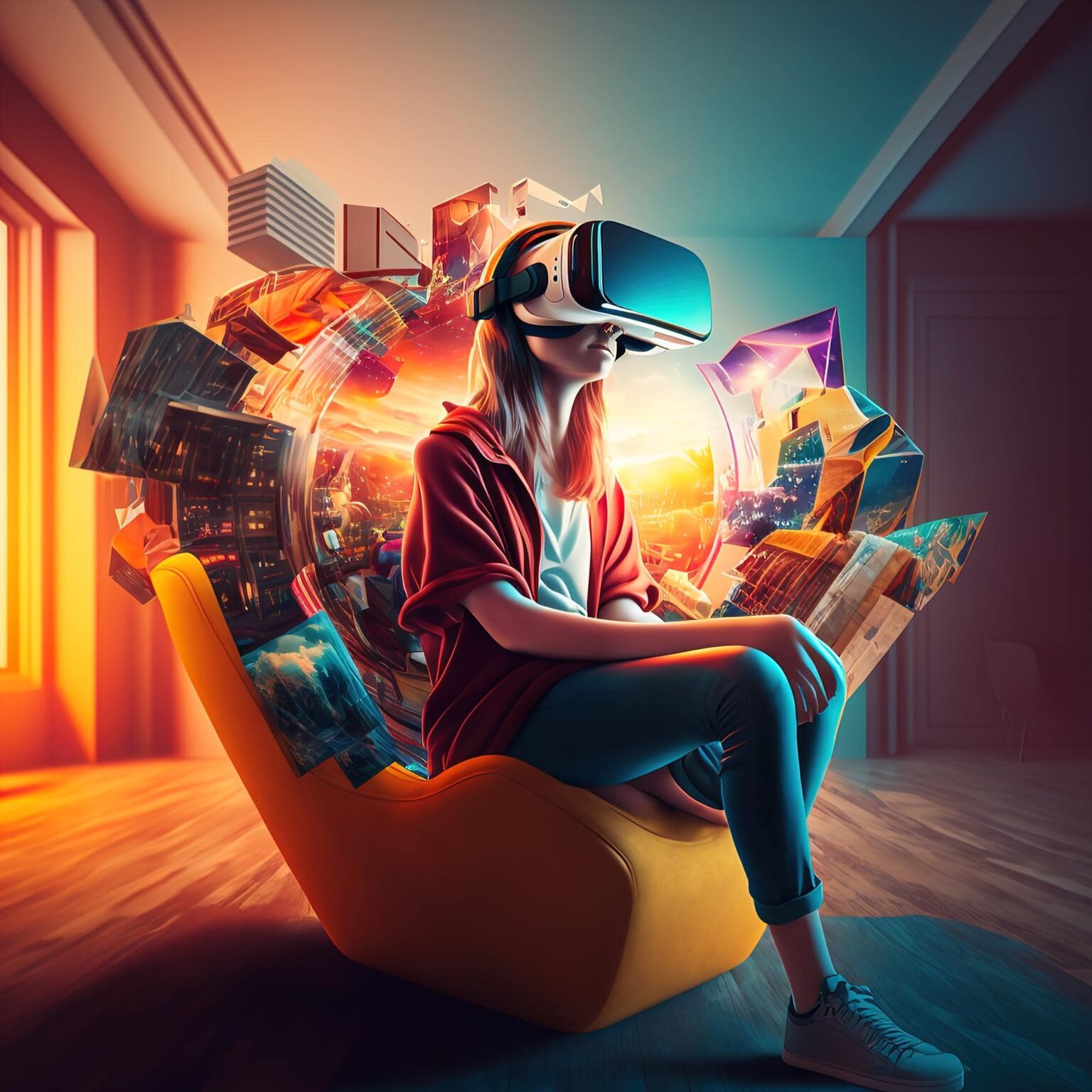Mixed Reality (MR) is a technology that blends elements of both virtual reality (VR) and augmented reality (AR) to create a seamless and interactive experience, bridging the gap between the real and virtual worlds. With MR, users can interact with virtual objects and environments while still being aware of and able to interact with their physical surroundings. Here’s how mixed reality works and its potential applications:
- Virtual Objects in the Real World: MR overlays virtual objects onto the real world, allowing users to see and interact with them as if they were part of their physical environment. These virtual objects can range from simple 3D models to complex holograms that can be manipulated and interacted with in real-time.
- Spatial Mapping and Tracking: MR devices use advanced sensors and cameras to map the physical space and track the user’s movements and gestures. This enables the virtual objects to align with the real-world environment and respond to the user’s interactions accurately. It creates a sense of depth and realism, enhancing the immersion and believability of the mixed reality experience.
- Real-Time Interaction: Users can manipulate and interact with virtual objects in real-time using gestures, voice commands, or handheld controllers. They can pick up, move, resize, and rotate virtual objects, enabling them to create, design, and explore in ways that were previously not possible.
- Remote Collaboration: MR facilitates remote collaboration by allowing users to share their mixed reality experiences with others. Multiple users can interact with virtual objects and environments simultaneously, regardless of their physical location. This has implications for various fields, such as architecture, design, engineering, and education, where teams can collaborate and make decisions in real-time.
- Training and Simulations: MR provides immersive and realistic training simulations for various industries. For example, in healthcare, medical professionals can practice surgical procedures on virtual patients. In manufacturing, employees can learn how to operate complex machinery in virtual environments. MR simulations enable safe and cost-effective training without the need for physical equipment or risking real-world consequences.
- Interactive Education: MR enhances educational experiences by bringing abstract concepts to life. Students can visualize complex scientific models, explore historical events, or interact with virtual replicas of artifacts. MR can create interactive and engaging learning environments that promote active participation and deeper understanding.
- Entertainment and Gaming: MR offers innovative gaming experiences by merging virtual elements with the real world. Users can engage in interactive games that utilize their physical space, allowing them to move, dodge, and interact with virtual characters and objects. This level of immersion and interactivity enhances the gaming experience and blurs the line between reality and virtuality.
- Architecture and Design: MR revolutionizes the way architects and designers visualize and present their projects. They can overlay virtual models of buildings or interiors onto real-world spaces, allowing clients to explore and make informed decisions. MR enables a better understanding of scale, spatial relationships, and design possibilities.
- Tourism and Cultural Heritage: MR can enhance tourism experiences by providing virtual guides, interactive maps, and virtual reconstructions of historical sites. Users can explore landmarks, learn about their history, and interact with virtual characters that bring the past to life. MR can preserve cultural heritage, even in situations where physical access is limited.
Mixed Reality offers a unique and powerful technology that seamlessly blends the real and virtual worlds, opening up possibilities for a wide range of applications. As MR technologies continue to evolve, we can expect even more innovative uses and transformative experiences that bridge the gap between our physical reality and virtual realms.



